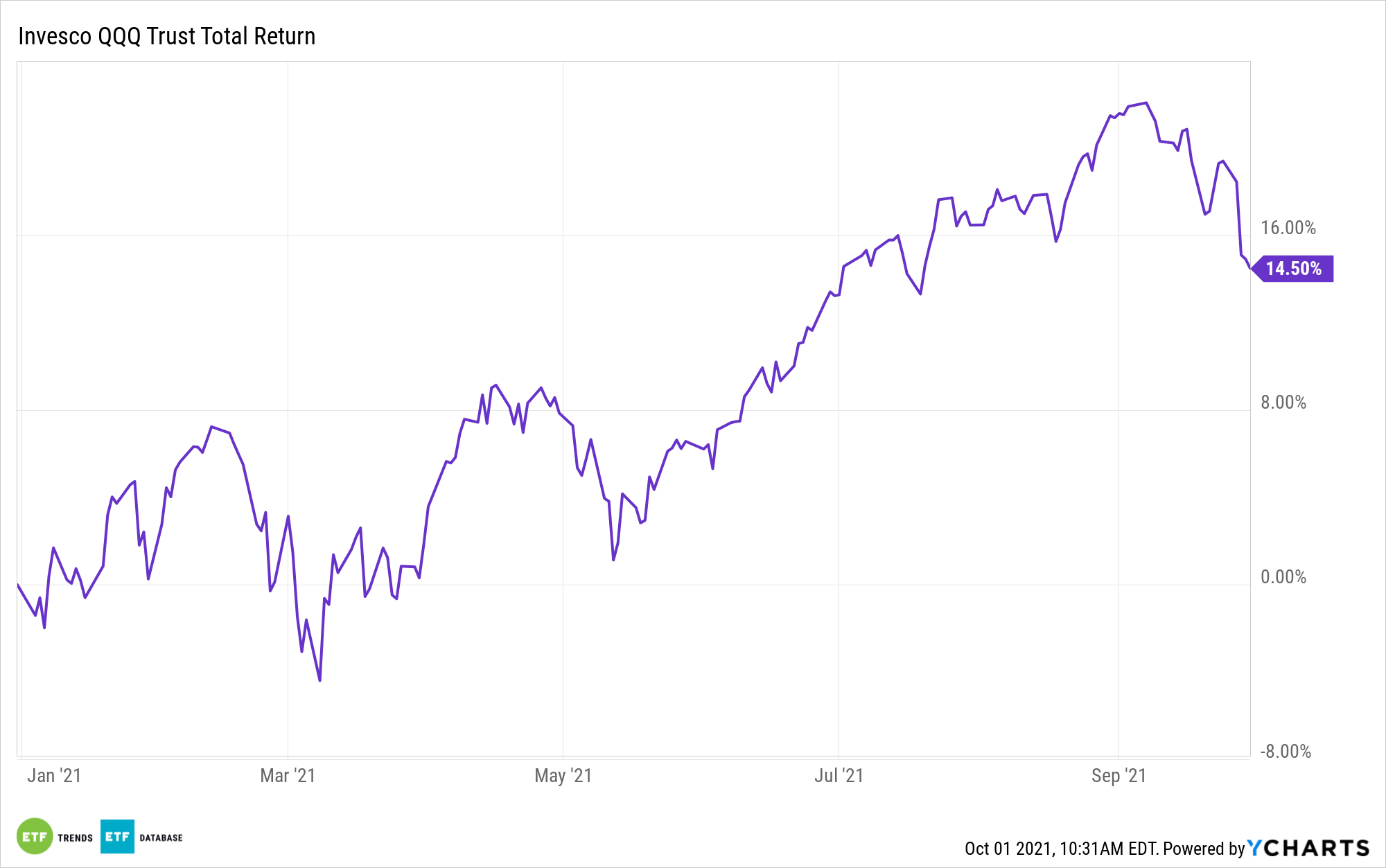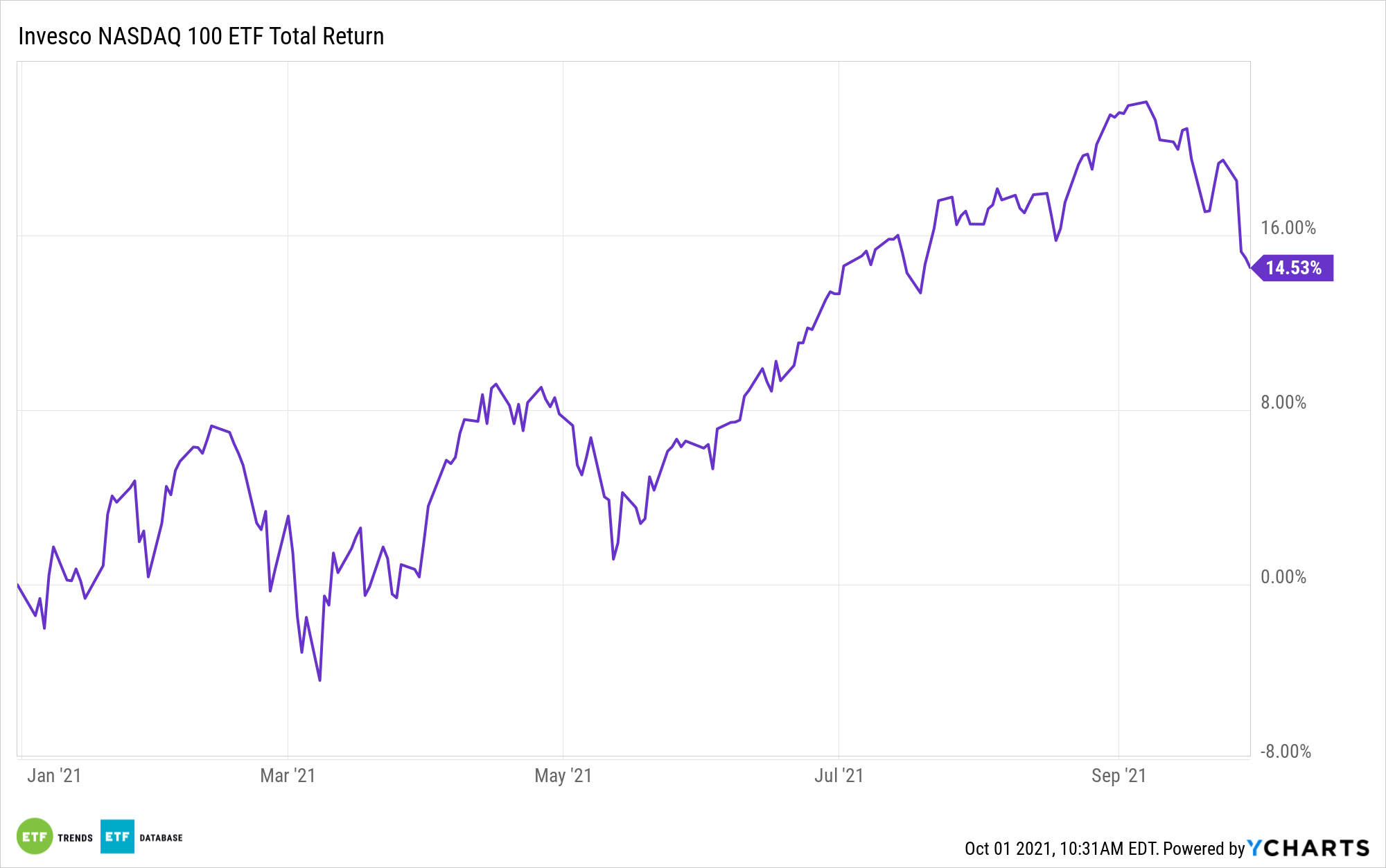The Nasdaq-100 Index (NDX) differs from broad market competitors, such as the S&P 500, in a variety of ways. For example, NDX significantly overweights technology stocks and features no exposure to the financial services sector.
Something that goes overlooked, however, is that the Nasdaq-100 includes foreign companies, which the S&P 500 does not. That means that popular exchange traded funds tracking NDX, such as the Invesco QQQ Trust (QQQ) and the Invesco NASDAQ 100 ETF (QQQM), include some ex-U.S. equities on their respective rosters.


The reason that QQQ and QQQM hold some foreign stocks is simple. While the S&P 500 and Russell 1000 indexes require companies to be based in the U.S. for entry into those benchmarks, NDX simply requires that a firm be listed on the Nasdaq. For foreign companies gaining entry into the Nasdaq-100, there are liquidity benefits.
“Index tracking helps attract more investors. Exchange-traded products tracking the Nasdaq-100 have an aggregate asset base of over $230 billion. That means for every 1% in Nasdaq-100 index weight, a company can expect to have around $2 billion of additional index investor interest,” notes Phil Mackintosh of Nasdaq.
While many ETF investors, particularly those embracing a cost-effective fund like QQQM, are long-term investors, that doesn’t harm liquidity. In fact, the Nasdaq-100 has some of the best liquidity among the major equity gauges.
“The QQQ’s, one of the most liquid ETFs in the world, trading around $15 billion each day,” adds Mackintosh. “Nasdaq-100 futures that trade over $176 billion each day across E-mini and Micro E-mini. Nasdaq-100 options that have average notional trading, based on option prices, of $25 billion each day.”
For investors seeking exposure to individual foreign equities, the Nasdaq-100 serves as a solid frame of reference because international stocks residing in the benchmark are highly liquid, and that liquidity can lead to lower transaction costs.
“The data shows that, for the large-cap stocks from the average and median spread (in basis points) are also lower for the foreign listings included in the Nasdaq-100,” says Mackintosh. “That should translate to lower trading costs and lower costs of capital for those listings.”
While QQQ and QQQM aren’t heavily allocated to foreign stocks, the ETFs are home to some familiar ex-U.S. names, such as JD.com (NASDAQ:JD) and MercadoLibre (NASDAQ:MELI), among others. Enhanced liquidity across NDX, regardless of components’ home country, is a plus for investors because it can lead to tighter spreads and lower costs for investors transacting in QQQ and QQQM.
For more news, information, and strategy, visit the ETF Education Channel.
The opinions and forecasts expressed herein are solely those of Tom Lydon, and may not actually come to pass. Information on this site should not be used or construed as an offer to sell, a solicitation of an offer to buy, or a recommendation for any product.








